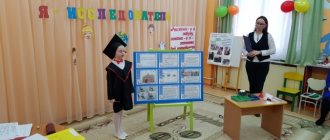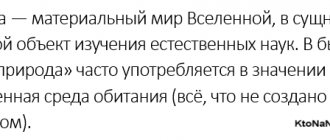History of watches for children. You can simply read a book about the history of watches to your child. You can let me watch a video. And we will study the history of watches through entertaining stories, pictures and experiments! Indeed, for the successful development of a preschooler’s mental abilities, it is best to give him the opportunity to discover new knowledge for himself, learn to solve cognitive problems, try to ask questions and answer them. This will be very useful to him both at school and in life! I invite you on a journey into the past and future of watches!
Our history of watches is very different from the dry text of a history textbook. She is lively and surprisingly interesting, inspiring and awakening new ideas! The story of a clock for preschoolers is structured as a dialogue with a child, as a joint search between an adult and a child for answers to questions. This story is not meant for one day. It can be used on a walk and at home, in kindergarten and at a party. I wish you creative communication with your baby!
Why do you need a watch?
Why do we need a clock? What do you think would happen if no one had a watch? If it is difficult for a child to answer a question, start thinking out loud yourself - fantasize (Here is what children can answer: “Dad wouldn’t know when to go to work”, “We would go to Misha’s birthday, but wouldn’t know the time. Come - and there’s no one there anymore. And we’d be upset,” “We’d go to the toy store, but it’s closed,” “We’d be late everywhere,” “We could miss the train or plane”)
How do you think people used to live without watches? How did people determine time? (Give your child the opportunity to think, think for yourself. After all, there was a time when there were no clocks. How did people get by without them?)
It turns out that there were clocks before, but in those ancient times they were different -... alive!!! Guess what a “live clock” is? What could they be? After asking a question, always pause to think and answer. If your baby is shy or at a loss, start thinking out loud and asking yourself questions. The child will gradually listen to you and reason with you. And then he will join the discussion and express his opinion. Let the child express the most fantastic assumptions, encourage him for them - he thinks and he expresses HIS OPINION, and this is VERY VALUABLE! It is much easier to retell someone else’s opinion to a preschool child than to have your own and express it in words. And in our modern life, the ability to formulate one’s point of view is the basis for success in many matters. After your child has dreamed up his imagination, tell him about a real live clock.
Presentation “Types of watches”
Presentation
on the topic of:
“SUCH DIFFERENT WATCHES”
Prepared by: student of 3 “A” class
Chikomazova Anna
What's happened?
We know everything - when it’s time for you to sleep
and when it’s time to get up. This is just a word - so, We are in a hurry, tick-tock, tick-tock. We walk at night, we walk during the day, We never get tired.
A clock is a device for determining the current time of day and measuring the duration of time intervals.
Sundial
The very first clock known to mankind was the sun clock. The first people were guided by the position of the sun, and therefore time depended on it.
The sundial can be drawn on the sand or on the ground, but can be made from scrap materials. The sundial has an arrow pointing north. To draw or make a sundial, just attach the arrow to the dial and position it in the north direction. The shadow of the arrow will show the exact time.
Fire clock
Fire clocks first appeared in China. They consisted of a spiral or stick of flammable material with suspended metal balls. When the material burned, the balls fell into the porcelain vase, producing a ringing sound. Subsequently, a type of fire clock appeared in Europe. Here candles were used, on which marks were evenly applied. The distance between the marks served as the unit of time.
Water clock
Water clocks were known in Ancient Egypt, Judea, Babylon, Greece, and China. The Greeks called the water clock clepsydra, which means “water thief.” With the help of these clocks, time was determined by the speed of water flowing from one vessel to another, equipped with marks, the water level in which showed the time. The first alarm clock on earth was also a water alarm clock - both an alarm clock and a school bell at the same time. The ancient Greek philosopher Plato is considered its inventor.
Hourglass
This is an unusual watch. An hourglass does not have a dial. They consist of two communicating vessels into which sand is poured. When an hourglass is turned over, sand pours out of one container into another over a certain amount of time.
Vintage cuckoo clock
Today, you can only find an antique cuckoo clock in your grandparents’ house. Few people use them because antique cuckoo clocks are very bulky and take up a lot of space. In such a watch, every hour an artificial cuckoo peeked out from the dial and made sounds. That is why such a mechanism is today called an “antique cuckoo clock.”
Wall Clock
There are also wall clocks. They don't take up as much space as an antique grandfather cuckoo clock because they hang on the wall. Wall clocks can be of any shape, and the dial can be of any size. Surely there is a wall clock in every home.
Wrist watch
In the beginning, wristwatches were only women's, ornate jewelry. In the 90s of the 19th century, military men began to use wristwatches.
Tower clock
The history of tower clocks in Moscow dates back to the distant year 1404; they were first installed in the Moscow Kremlin. The most famous clock in Russia is the Kremlin chimes, installed on the Spasskaya Tower of the Moscow Kremlin. The first documentary evidence of the presence of a clock on the tower dates back to 1585.
The modern Kremlin chimes were installed in 1851. Russia's main clock is eight years older than its British counterpart. The clock built into the tower has four identical dials, one located on each side of the Spasskaya Tower. The diameter of the dial of the Kremlin clock is not much smaller than the English Big Ben - it is 6 meters 12 centimeters. The metal hour hand is 2.97 meters long, the minute hand is 3.27 meters long, and the chiming pendulum weighs 32 kilograms.
This is the history of ordinary watches that have become so familiar to all of us today. And who knows what they will become... In the meantime, the device for measuring time quickly counts down the seconds and regularly serves a person in all areas of his complex and eventful life.
THANK YOU
FOR YOUR ATTENTION!
Presentation for preschool children on the topic: “Development of time concepts”
DEVELOPMENT OF TEMPORAL REPRESENTATIONS IN SENIOR PRESCHOOL CHILDREN
Pedagogical Council
Performed
Teacher of MADO No. 150
Rybakova Irina Vladimirovna
Khabarovsk 2016
Theoretical aspects of the development of time orientation in children
- Currently, there is a rethinking of the goals, role and place of additional education of children in the entire system of domestic education and upbringing. One of the issues in studying the methods of mathematical development of preschool children is the formation of their temporal representations.
- A person faces the problem of time every day, every minute. Time is the regulator of all human activities; not a single activity takes place without the perception of time; the world around us exists in time. The specific features of time as an objective reality make it difficult for children to perceive it. Therefore, in pedagogical practice the question arises of how to show the time to a child.
The purpose of the work
is a study of the influence of didactic games on the development of temporal concepts in children of senior preschool age.
Achieving the goal will be facilitated by solving the following tasks:
— study theoretical approaches and methodological recommendations for introducing older preschoolers to time;
— study scientific and methodological literature on the perception of time by preschool children;
— test the author’s diagnostic methods to identify the level of formation of ideas about time;
— to develop a set of developmental activities for the formation of temporary concepts in children of senior preschool age
Object of study
:
the process of formation of temporal representations in children of senior preschool age.
Subject of research
:
didactic games in the formation of temporary relationships in a preschool child.
Hypothesis: if you use didactic games with children, the formation of temporary concepts in children will be more successful.
Research methods:
Theoretical:
analysis of scientific and methodological literature; study and analysis of diagnostic techniques.
Practical:
diagnostics of the level of assimilation of the concept of time; development of a set of developmental activities for the formation of temporary concepts in children of senior preschool age; analysis and interpretation of research results.
This work includes a whole range of tasks
— formation of primary practical orientation in time;
- formation of a sense of time;
— familiarization with individual “temporary” standards; - formation of initial ideas and concepts about some properties of time.
Sequence of training:
- 1.
We learn the names of the days of the week in order, connecting them with our activities
2.
Every day we say what day of the week it is today, yesterday, and tomorrow. - 3.
After studying the ordinal count, the days of the week are associated with the ordinal number.
.
Even older preschoolers have insufficient knowledge of how to measure time (using a calendar, clock). The names of time intervals (minute, hour) remain purely verbal and abstract for children, since life experience of activities during these periods of time has not yet been accumulated. .
Often preschoolers do not know the names of the days of the week and cannot determine their sequence. There is unevenness in remembering the days of the week; days that have a pronounced emotional connotation for the child are better remembered. This feature is also manifested in children’s memorization of the names of the months.
Time units: basic (day, week, month, year), derivatives (hour, minute, second). Children's acquaintance with units of time measurement should be carried out in a system of strict consistency, where knowledge of some time intervals, the ability to define and measure them, would serve as the basis for familiarization with subsequent ones and would reveal to children the essential characteristics of time: fluidity, continuity and irreversibility. Instruments for measuring time: watches (sandwatch, mechanical, electronic).
In the senior group, work begins with clarifying the concepts that were formed in the previous group. Particular attention is paid to learning to distinguish between parts of the day and determine the sequence. In this group, preschoolers should be able to determine the periods of the day, observing not only the work of people, but also the position of the sun.
To better remember the days of the week, you can use pictures, short poems, models, etc. In order for children to better remember the sequence of days of the week, we can recommend that parents reinforce these tasks at home.
Days go by, minutes melt away, Time flies by quickly What year is going on now - The calendar gives the answer What month it is - We look at the calendar.
Hours and minutes will pass, They will gather together in a day. They have twenty-four hours, and the hands work wonders.
At the beginning of the school year, children in the older group consolidate and deepen their understanding of such time periods as morning, afternoon, evening and night. As visual material, pictures or photographs are used that depict children in the process of various activities throughout the day: making the bed, morning exercises, washing, breakfast, etc.
Diagnostics of the level of assimilation of concepts of time
Diagnostics of the level of assimilation of concepts of time
Research base: MKDOU village. Sosnovka from September 2015 to March 2021.
The senior group of the kindergarten, including 15 people aged 5–6 years, took part in the study.
Purpose
:
to identify the level of mastery of the concept of time in children of senior preschool age.
Tasks:
- identify the level of formation of temporal representations in children of senior preschool age;
- develop a set of developmental activities for the formation of temporary concepts in children of senior preschool age;
- conduct a control diagnosis of the level of formation of temporal representations in children of senior preschool age.
The study was carried out in stage III.
Stage I –
diagnostics of the level of assimilation of the concept of time.
Stage II –
a set of developmental activities for the formation of temporary concepts in children of senior preschool age.
Stage III –
analysis and interpretation of research results.
A set of developmental activities for the formation of time concepts in children of the older group
Diagnostics showed results that are reflected in the diagrams
Let's compare the results of the first and second diagnostics
- At the beginning of the year, the children had a low level, but after a set of developmental activities, the high and average levels increased significantly. This means that the use of didactic games has a significant impact on the development of preschoolers’ time concepts.
- As we see, in the course of any lesson in kindergarten, it is possible to train children in the ability to perform work exactly within the specified time, teach them to determine the duration of this or that activity by time intervals and plan in advance the possible amount of work for a particular period of time in within 5-30 minutes. The educational value of such activities increases. In our experience, in such conditions, children worked more organized, were less distracted, regulated the pace of their activities and managed to do more. They did not waste time waiting for those who were lagging behind; everyone learned to finish their work at the same time, which is extremely important in terms of preparing for school. As the work progressed, the children’s sense of time and ability to regulate their activities over time became increasingly improved.
Time flies,
telling the children to grow up. The clock whispers like this: TICK-TOCK, TICK-TOCK!







